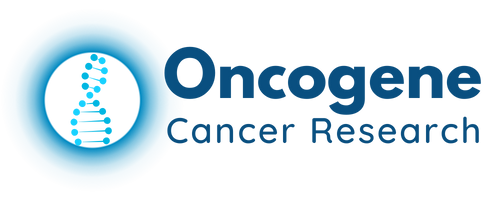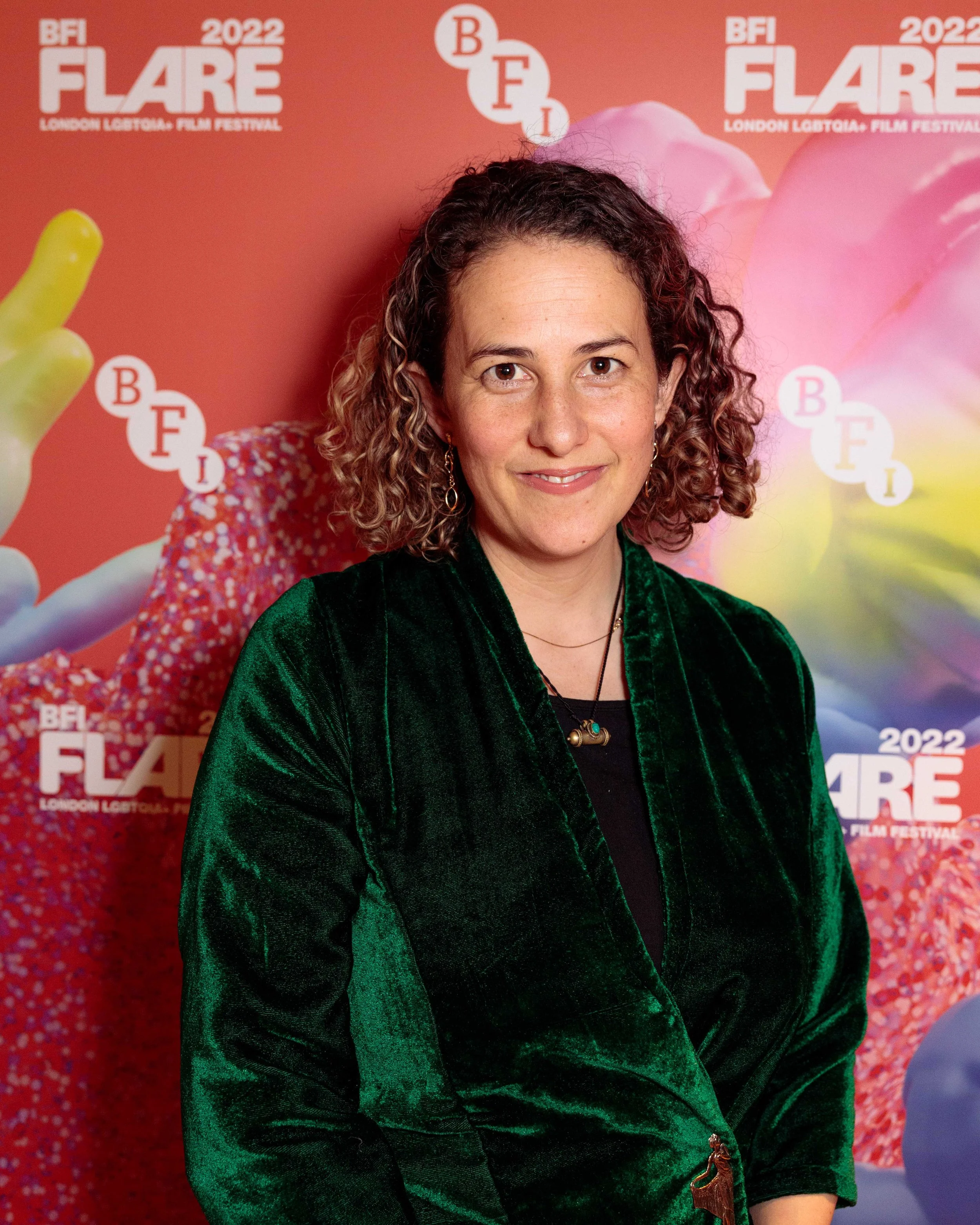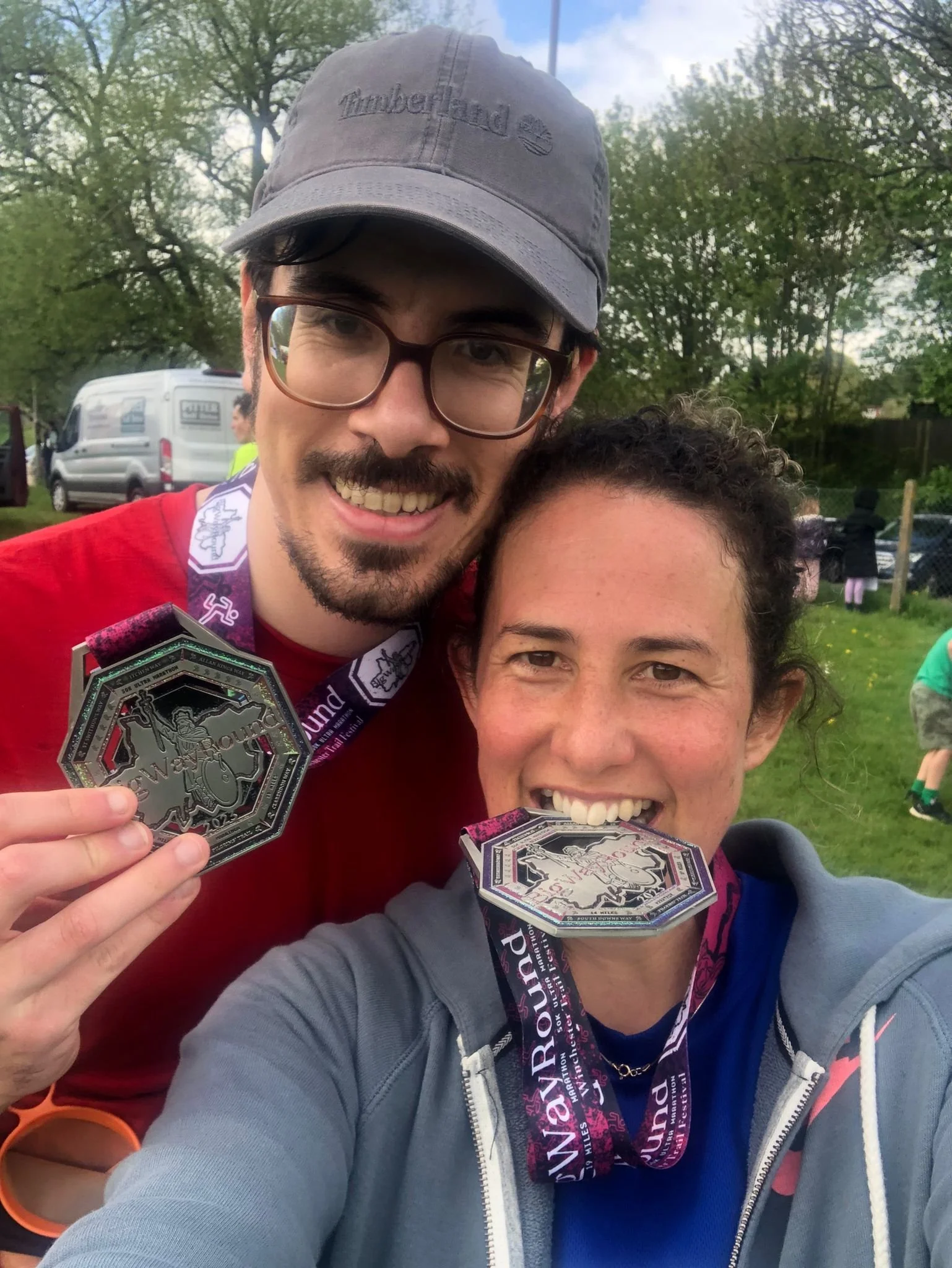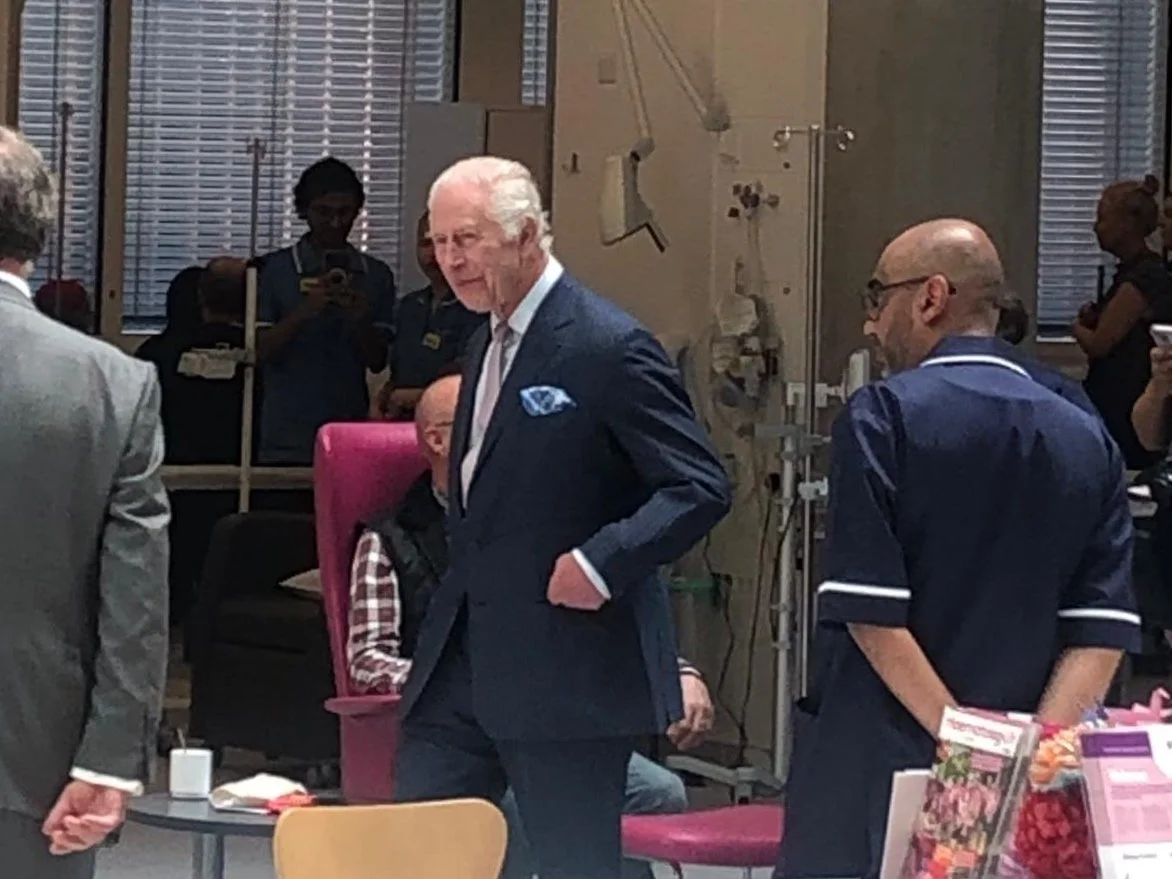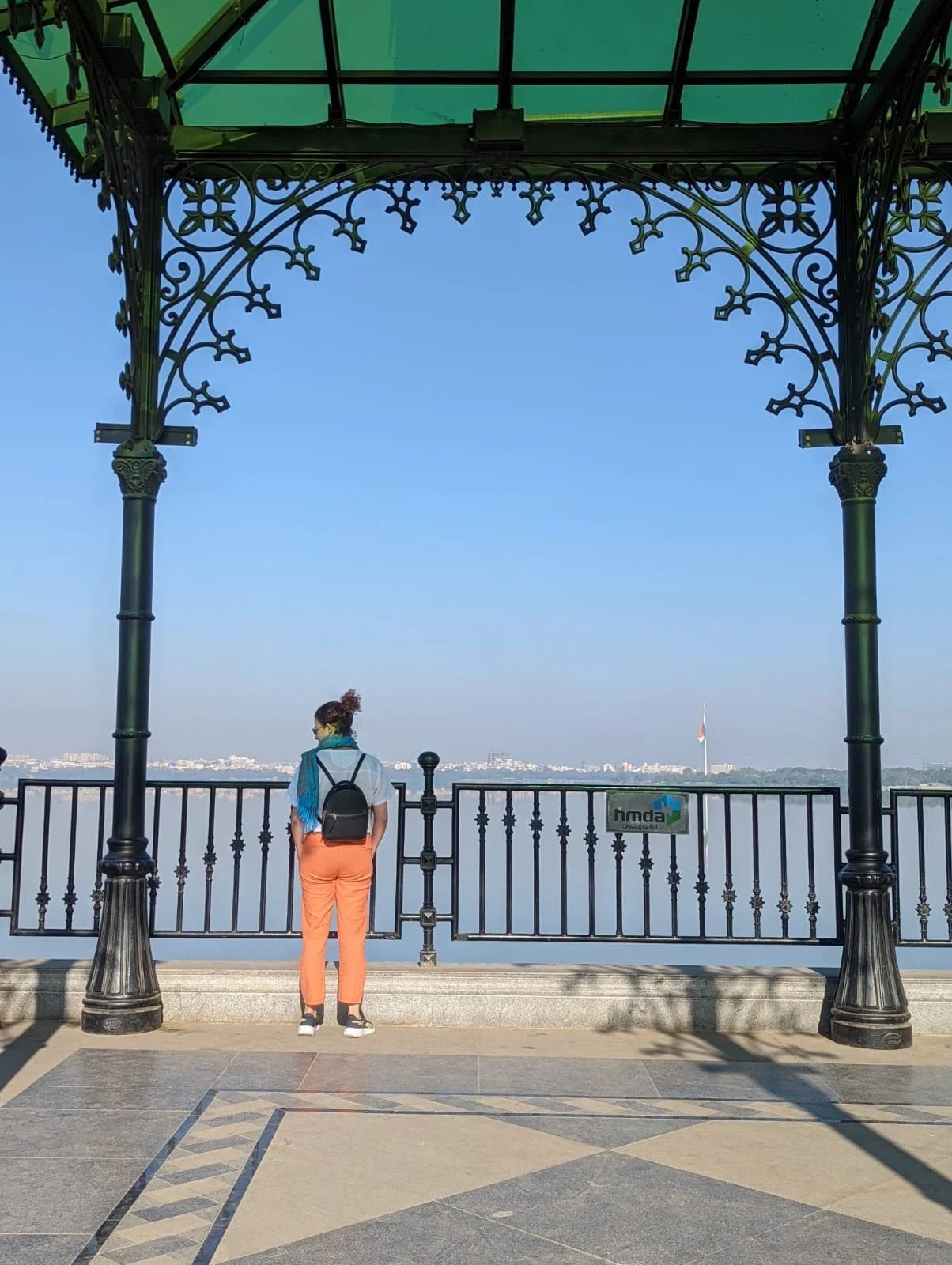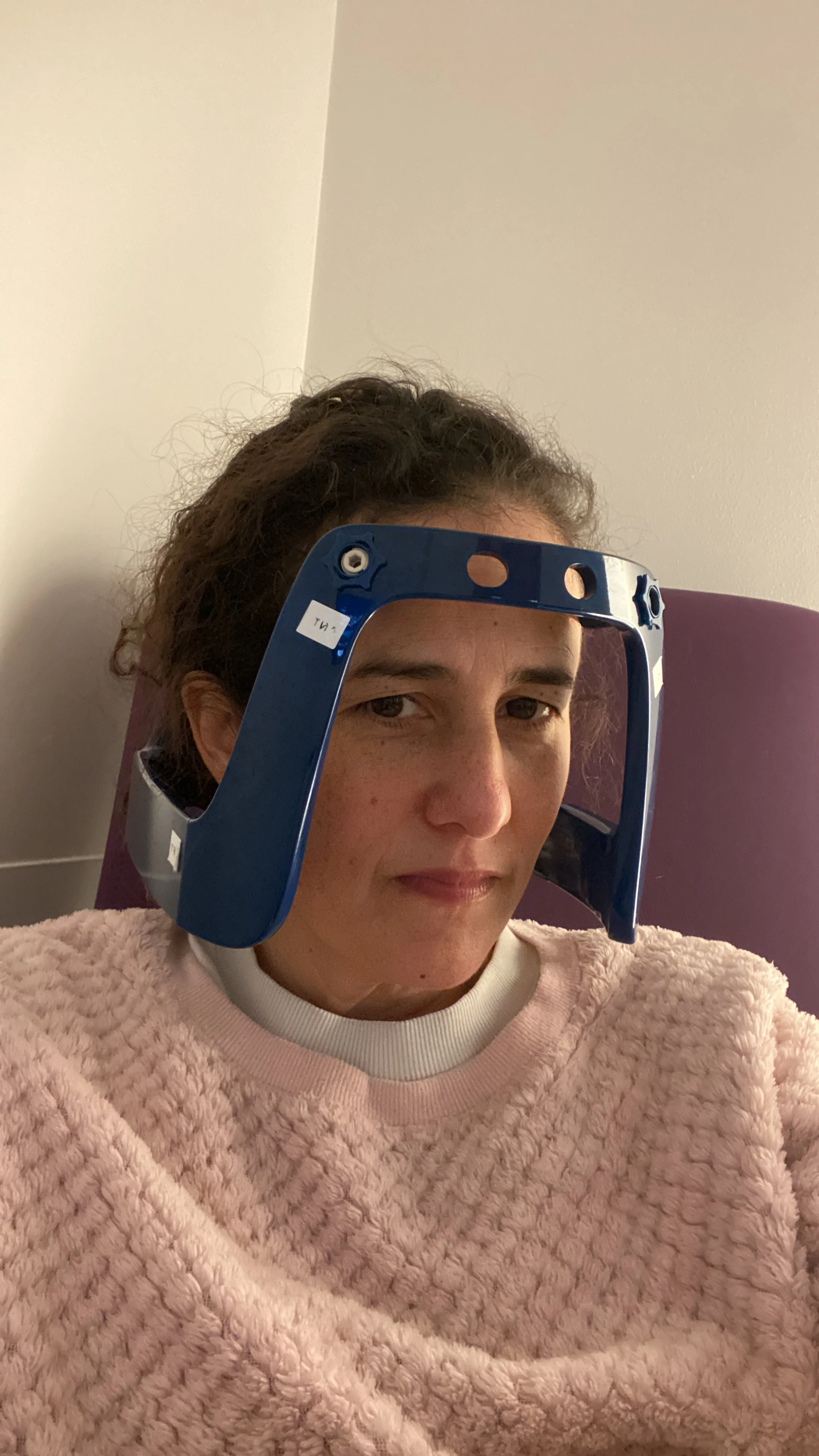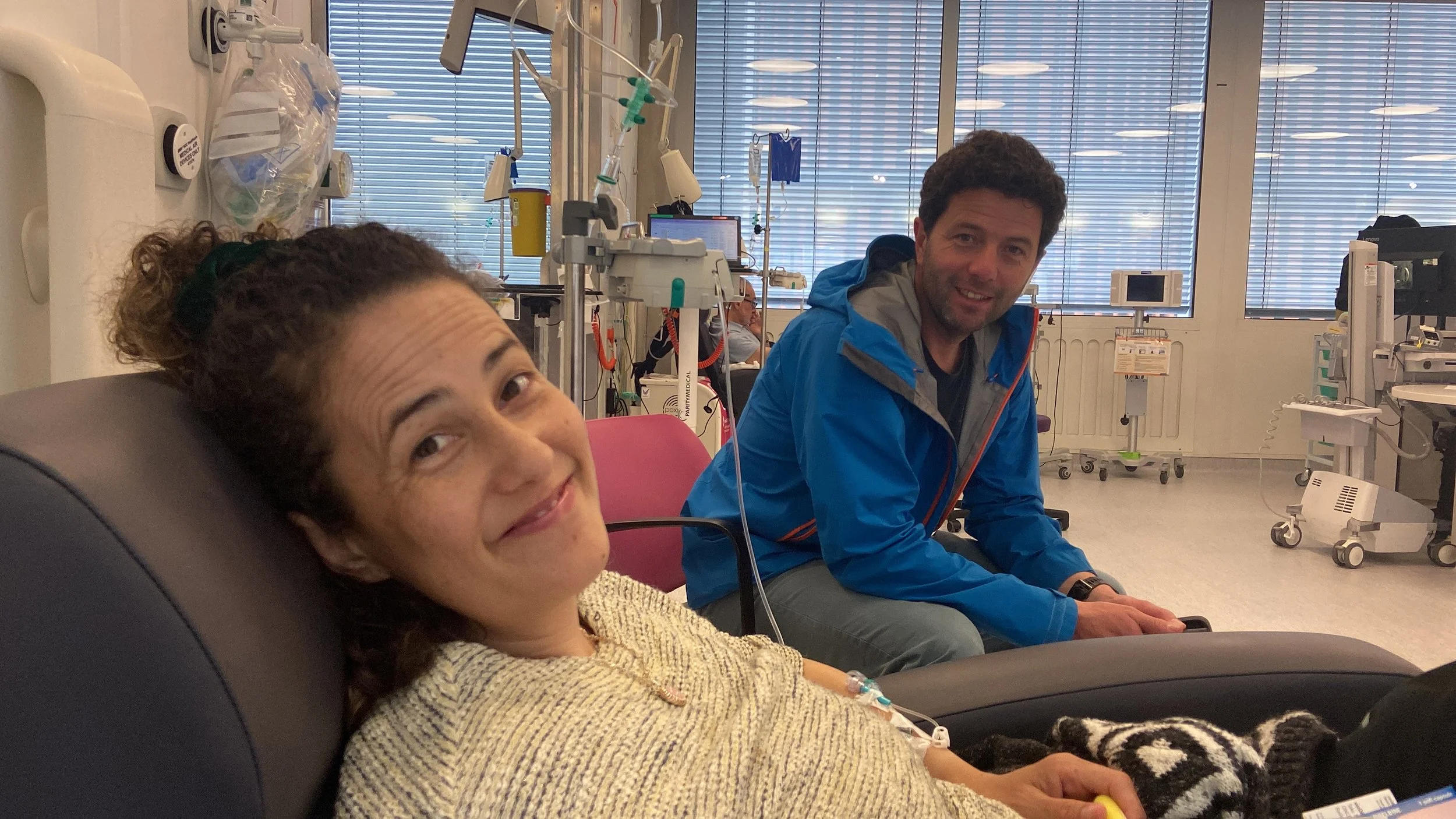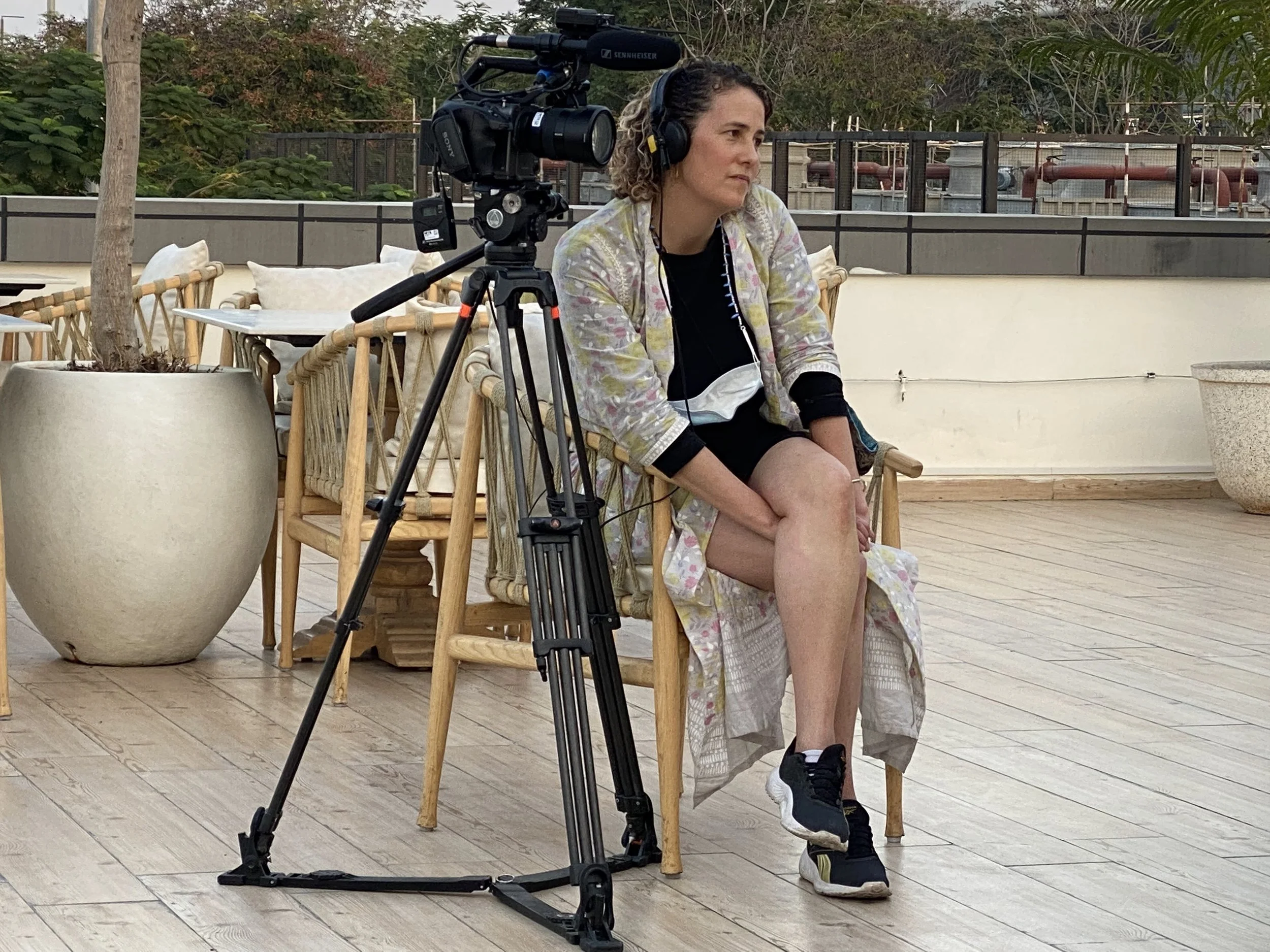Patient stories.

I went to the doctor thinking I'd get antibiotics for a cough. Instead, I got a phone call telling me a mass had been found on my lung.
— Sarah Li, from London and aged 42, living with stage 4 EGFR lung cancer
Meet Sarah.
From marathon finish lines to treatment timelines: Sarah’s unexpected journey to stage 4 EGFR+ lung cancer
I felt guilty taking time off work to see my GP for a cough. Then I got the call saying I had a mass on my lung. That moment, my life split into before and after.
Sarah had always been the one behind the scenes and in the editing room, crafting narratives from people's experiences. As a photographer, filmmaker and free spirit that loved to travel, she had recently settled into conventional life. She moved from freelancing to a regular job making films about running. She had recently purchased a house and was in a loving, stable relationship with her partner Robin. Everything seemed to be falling into place.
Then came the cough that wouldn't quit.
When intuition meets advocacy
Throughout winter 2023, Sarah had a cough she couldn’t shake. By February, she decided to see her doctor.
"I felt guilty taking time off work to see my GP for a cough," Sarah recalls. "But I've always been paranoid about coughs because of my brother. He was diagnosed with non-Hodgkin’s lymphoma at the age of 20 through investigations for a cough."
When Sarah visited her GP on 5 March 2024, the doctor found nothing unusual during the chest examination. “My GP referred me for an X-ray anyway. I'm forever grateful for that decision," says Sarah.
The very next day the hospital called: they had found a mass on her lung.
Racing against time
What followed was a blur of scans and appointments. Sarah found herself on "the cancer pathway" a with fast-tracked series of tests including MRI, PET and CT scans, and biopsies.
"I was getting phone calls to bring forward scans because of cancellations or openings. I'm needle phobic, and suddenly I was having dyes pumped into my body," shares Sarah.
The whole thing felt unbelievable. Sarah had completed six marathons and was training for the Valencia Marathon with Robin. But by April, her symptoms were worsening dramatically.
"At night, the cough became exponentially worse with loads of mucus coming up. I started sleeping with my head propped up at my mother’s suggestion," she recalls. "I was feeling more tired, coughed up blood once, and had this weird right shoulder pain that I associated with a previous ski injury."
The diagnosis that changes everything
On 18 April 2024 – a date "etched in our minds" – Sarah and Robin received the devastating news: stage 3B lung cancer, with a primary tumour in her lower left lung and cancerous nodules on her right lung.
"It was surreal," Sarah remembers of her consultation. "People kept coming into the room who already knew all about me. They clearly had discussed me at the MDT [multidisciplinary team meeting]. I was terrified."
Her oncologist asked about her heritage. Sarah is quarter Chinese through her grandfather, a medically significant detail. Sarah had been relying on a friend, an oncology nurse in Australia, who had already suggested that she might have an EGFR mutation, which is common in women with no smoking history and of Asian descent.
"My friend even mentioned this drug called osimertinib and said she treats many women with lung cancer who lead very normal lives on it."
But Sarah's stage 3B diagnosis meant she would first undergo aggressive "curative intent" treatment: a gruelling chemo-radiotherapy regimen designed to eliminate the cancer.
Sarah’s oncologist said he would be looking after her as a whole person. Given her age, he raised fertility preservation. Sarah and Robin were catapulted into conversations they hadn’t yet broached. They met a reproduction specialist but ultimately agreed that preserving Sarah’s life was the priority – not wanting to delay treatment. Sarah’s oncology nurse friend came to the rescue again, suggesting she ask about a drug called Prostap® (or Zoladex®) that is used to help preserve fertility.
Left on her knees
Sarah says her treatment regime was brutal – living up to their "three beasts" nickname for their aggressive nature. She received carboplatin and cisplatin intravenously and vinorelbine as an oral chemo pill. The cisplatin required four hours of saline to wash her system, making each session an all-day affair.
On her first day of chemotherapy in April 2024, Sarah walked into the chemo ward noticing what looked like “bouncers” on the doors and assumed it was tight security around the strong chemotherapy drugs.
"While I was lying there with a cannula in my arm, getting these powerful drugs pumped into me — suddenly, King Charles walks in," Sarah recalls. "It was a whirlwind start.”
King Charles and Queen Camilla’s surprise visit marked the King’s first public appearance after his cancer treatment.
"Taking chemotherapy home to my fridge was surreal," she says of the vinorelbine tablets. "That's when I realised that I play an active part in my cancer treatment. We patients have a say and a responsibility."
Nine weeks of combined chemotherapy and radiotherapy took their toll. "I couldn't take anymore. I got to the point where I couldn't even drink water without agonising pain," recalls Sarah.
While not common in EGFR lung cancer, after the chemo-radiation, Sarah began a form of immunotherapy called durvalumab – in what her oncologist called "belt and braces" to mop up any remaining cancer cells. For six months, the monthly infusions seemed manageable compared to what she had endured.
Then a routine scan in January 2025 shattered her sense of security.
The moment everything changed – again
Sarah attended her post scan consultation with her oncologist expecting a typical discussion. Instead, the latest scan revealed an 8mm lesion in Sarah's brain and growing nodules in her lungs. In an instant, she was restaged from potentially cured to stage 4 – incurable.
"I walked in expecting a routine scan review and walked out with incurable cancer. I also was moved to a new medical oncologist (as I had been under the care of a clinical oncologist). I was given a box of pills to start that evening and the frightening knowledge that I had cancer in my brain. While I’ve looked at all my scans, I’ve not been able to look at my brain scans."
Sarah’s new medical oncologist explained she would now go onto osimertinib, an EGFR-targeted therapy – an oral medication that inhibits but does not cure the cancer.
Sarah also consulted a neurosurgeon who advised gammaknife surgery for the brain met – which delivers precisely focused beams of gamma radiation to treat tumours and lesions. It uses a headframe – not the full-face masks often seen on social media, but a “crown” – to guide the radiation beams to the target area with extreme accuracy.
The day of surgery, Sarah learned that just within 18 days of starting osimertinib, her brain lesion shrunk from 8mm to 4mm – a dramatic response. Sarah elected to proceed with the surgery to ensure the cells were fully eradicated.
In reviewing her paperwork, Sarah found that in addition to EGFR exon 21 she has the TP53 co-mutation. While researching the significance of this, she came across data from the recent FLAURA-2 study.
Sarah says, "My new oncologist knew all about FLAURA-2. How effective it was, that patients with brain mets and TP53 mutations – exactly my profile – responded well. But it wasn't standard NHS care."
The combination therapy would cost £3,500 per cycle, a financial burden Sarah decided to take on. Three months after she began paying privately, NICE approved the combination as standard care for newly diagnosed patients in England. The cruel irony is that because Sarah had already started osimertinib, she was considered "treated" and thus ineligible for NHS funding.
An ultramarathon back to the chemo chair
In May 2025, Sarah returned to the chemo unit for her first treatment under the FLAURA-2 regimen – an anxious day after her earlier chemo experience. But the treatment has been kinder than the three beasts. The weekend before she restarted chemotherapy she walked half the coastline of the Isle of Wight — 53km. Whilst she wouldn’t have the strength for that under the current chemotherapy regime, Sarah is able to function and maintain aspects of regular life, and plans to be back to an active lifestyle once the chemotherapy block is over.
Balancing cancer and career
For younger people like Sarah, working through cancer treatment can bring unique challenges. It’s not always possible to stop working entirely.
“Working with cancer is complicated,” she says. “Often we don’t realise that we’re legally protected.” Her advice to others is: do the research — not just about your diagnosis and treatment options, but about your legal rights at work too.
She points to organisations like Working With Cancer in the UK and other patient groups that offer guidance and support. “You deserve to have an employer who treats you with sensitivity and respect,” she adds. “But first, you need to know what you’re entitled to.”
It’s a lot to take on whilst you’re readapting your life to living with a chronic disease and she wishes there was more advice, information and support out there. If you find yourself with your back against the wall, find a good employment lawyer, because employers often don’t realise their legal responsibilities towards their employees.
Taking back control: the power of self-advocacy, a tribe and research
Sarah says self-advocacy is empowering and part of moving forward. She cites three specific moments that her advocacy changed the course of treatment. Asking about the Prostap to help preserve her fertility and have potential options later. MRIs were introduced when she raised them with her team – this has proven vital given how quickly the cancer went to her brain. Sarah also suggested the FLAURA-2 protocol.
Unable to run marathons anymore, she works with a physiotherapist through the NHS charity Move4You. She practices yoga, meditation, and acupuncture – activities that were once "nice to have" but are now "paramount and central.”
Sarah draws strength from her family, friends and especially her partner Robin. It’s a strange shift for Robin to go from partner to caregiver. He’s been by her side through every appointment and every tear. “He didn’t choose this role, but he stepped into it completely,” she says. “Partners often become our mirrors – when I’m struggling, he’s the one who sees it all.”
Activities like yoga and meditation - once a nice to have - are now a must have.
In Sarah’s story, stage 4 isn't an ending – it's a chapter in an ongoing narrative of a beautiful life, a new community and science, placing a lens on the powerful human capacity to adapt, thrive and embrace hope.
June 2025

